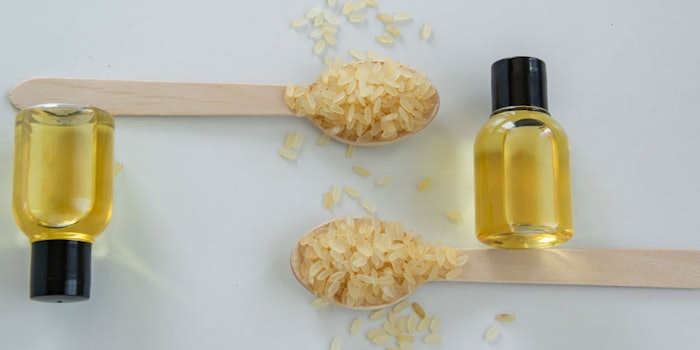
Biosil's Phytic Acid Extreme (PAE) ingredient is a 50% solution of phytic acid sourced from rice. This naturally derived material offers multiple benefits for skin, described next, and serves as an alternative to alpha hydroxyl acids (AHA), which can be irritating. The following commentary explores the properties of phytic acid and provides tips for using it.
According to Polina Shapiro, technical manager for Biosil Technologies, phytic acid is a self-neutralizing acid. Long-term skin exposure does not lead to detrimental conditions, as one might expect from glycolic acid or other AHAs.
Furthermore, phytic acid is outstanding for cosmetic uses. "This material brings all the benefits of AHA but is less irritating," she writes. "It is also all natural and more economical." The company performed a series of studies with the ingredient to assess both its exfoliating and skin lightening activity.
Exfoliation Tests
To study exfoliation, the effects of a 1% phytic acid gel were compared with a 1% glycolic acid gel as the positive control. A placebo (gel without phytic acid) served as the negative control.
The topical treatment with 1% phytic acid significantly increased the number of corneocytes released with respect to the placebo. This effect was comparable to that of the 1% glycolic acid treatment.
Skin Lightening Tests
Skin lightening tests were performed comparing phytic acid gel at concentrations of 1% and 2% with ascorbyl glucoside gels at 1% and 2% as a positive control. A placebo gel without the actives served as a negative control.
The topical treatment with formulations containing 1% and 2% phytic acid produced a significant decrease in melanin production. This lightening effect was comparable to that of the topical treatment with formulations containing 1% and 2% ascorbyl glucoside.
Formulating Challenge: pH
As noted, however, PAE poses challenges to formulating. "Phytic Acid Extreme has a very low pH level of less then 1," explains Shapiro. "It creates some complications for incorporating it into the formulations. Some components of the formula are not tolerant to this low pH and might be easily destroyed by it."
She adds that depending on the formulation, the best way to create stable formulations is to take an additional step of neutralizing PAE to the desired pH. "You can perform [this step] in a separate beaker with a sodium hydroxide 50% solution."
Shapiro notes the order of addition is important as well. "You first must neutralize the [phytic acid]. Only after that may you add other components of the formula. This is the only way to make the ingredients compatible."
For more information, contact Biosil Technologies.










